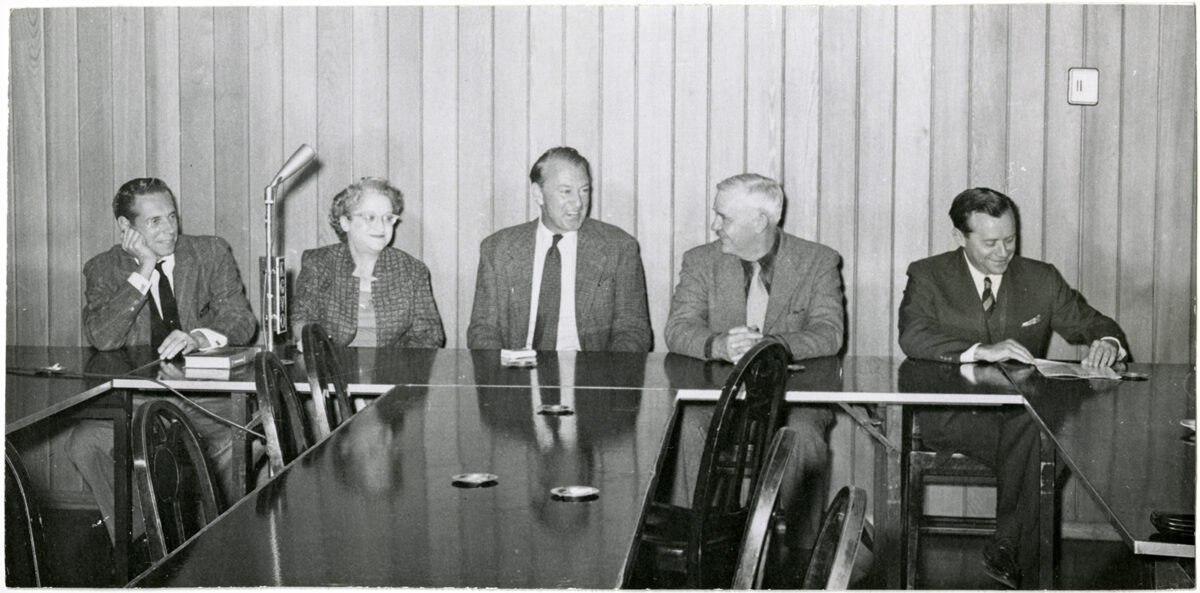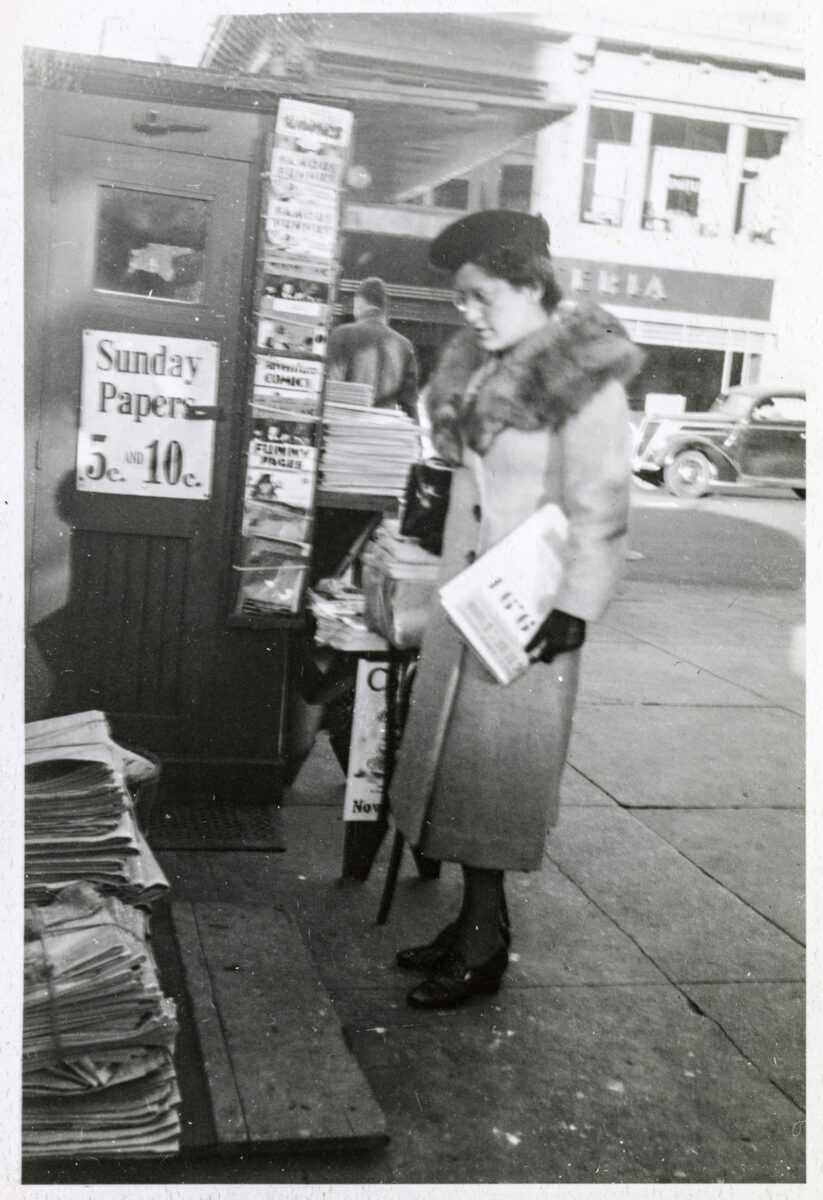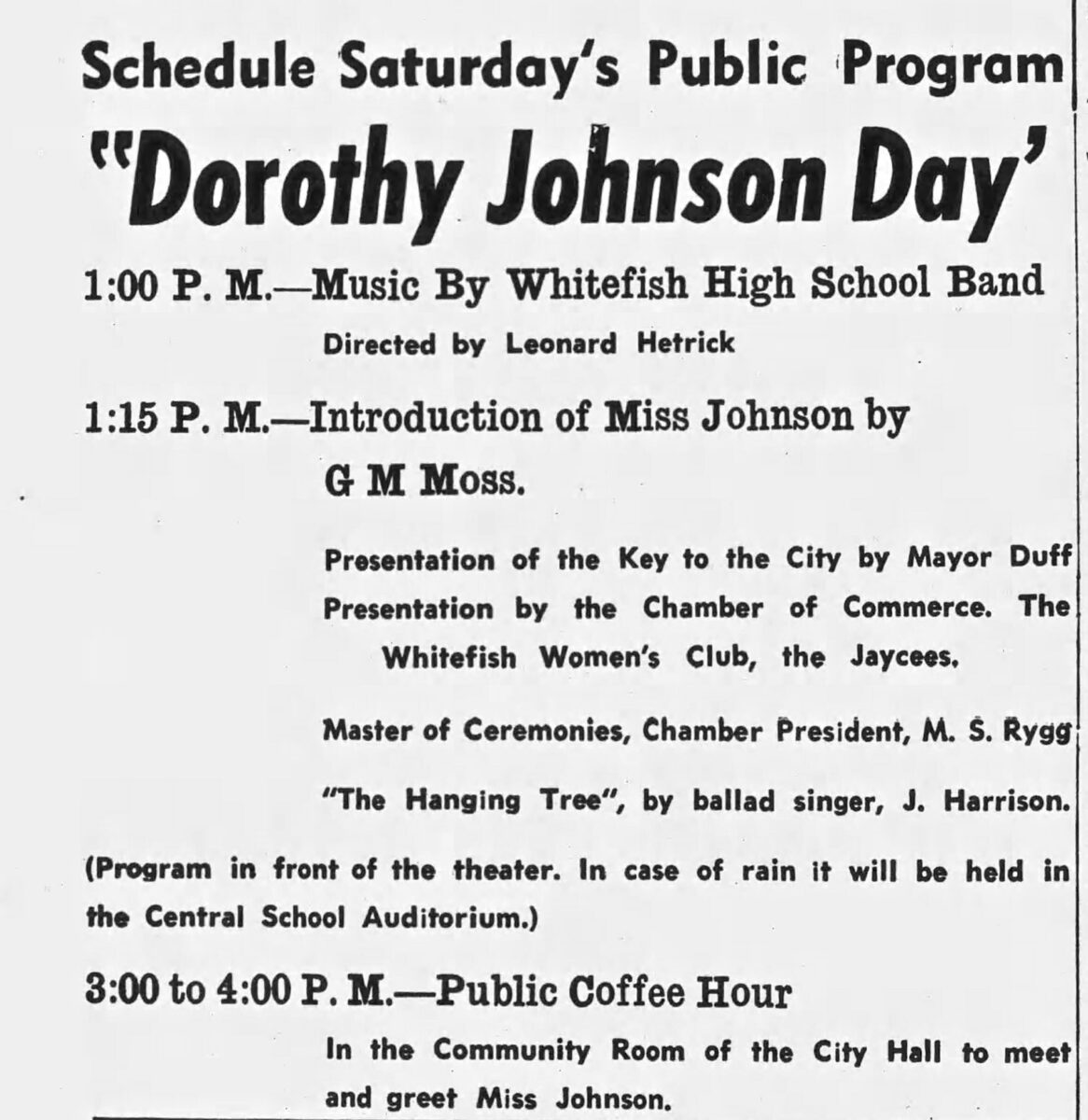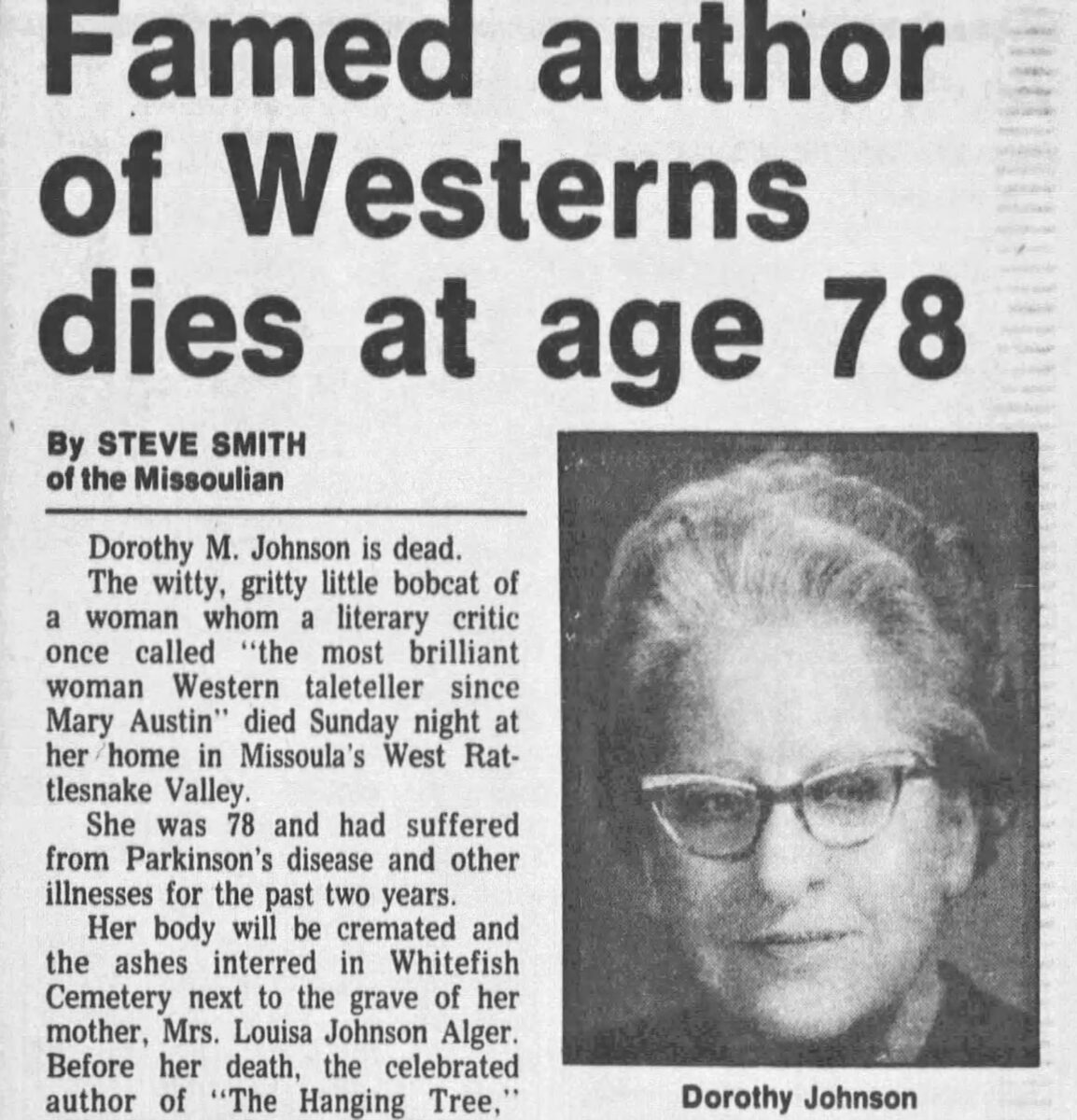The Western Taleteller of Whitefish
Although Dorothy M. Johnson’s oeuvre included such famous works as “The Man Who Shot Liberty Valance” and “A Man Called Horse,” she spent much of her life enduring financial hardship in her hometown of Whitefish, where she paid her dues and left more behind than she owed
By Butch Larcombe
The opening paragraphs of “The Man Who Shot Liberty Valance” describe a sparsely attended 1910 funeral in an unnamed western town, an event seen through the eyes of a newspaper reporter, his interest fueled by talk that the dead man “had been something of a gunfighter in his early days.”
“One by one,” the reporter’s account goes, “they filed by the casket, looking into the still face of old Bert Barricune, who had been nobody. His stubbly hair was white, and his lined face was as empty in death as his life had been. But death added dignity.”
The words are an introduction to the work of Dorothy M. Johnson, a Montana writer still unfamiliar to many although her fiction is revered for its unglamorized portrayal of the West with stories populated by characters, white and Indigenous, that often smudge the lines between good and evil.
While Johnson’s stories are deeply rooted in the West, some of her most popular stories first surfaced in big-city magazines. “The Man Who Shot Liberty Valance” landed on the pages of Cosmopolitan, long before the magazine began dispensing beauty tips and relationship advice. Johnson’s western fiction appeared in other glossy publications, too, including The Saturday Evening Post, Collier’s and Argosy.
Those magazines had many readers in the mid-20th century, but it was Hollywood and big-name stars that brought broader attention to Johnson’s work. “The Hanging Tree,” starring the Montana-born actor Gary Cooper, was first to hit the silver screen, followed in 1962 by “Liberty Valance,” which featured John Wayne (as the aforementioned Barricune), James Stewart as Ranse Foster and Lee Marvin as the despised Liberty Valance. Almost a decade later, Richard Harris headlined “A Man Called Horse,” the story of an Easterner who becomes part of the Sioux tribe.

Although the Hollywood versions of these stories varied sometimes significantly from Johnson’s original work, they were to many people an introduction to the Montana writer. Among those who made her acquaintance via the films was Craig Johnson, the writer who creates the mystery novels featuring Walt Longmire, the fictional Wyoming sheriff. In an interview with The New York Times earlier this year, Craig Johnson said the Montana author was one of his favorites among deceased western writers. Familiar with the famous films, he discovered her after a friend loaned him a copy of Dorothy Johnson’s short stories.
“I was just stunned at the sparse, honest humanity and true understanding of what it was to be western,” Craig Johnson said in an email interview. A personal favorite Dorothy Johnson story? “Lost Sister,” a 1956 short story about a white girl kidnapped by “hostiles.” While her best-known stories focus on masculine characters and issues, “Lost Sister,” he says, focuses on the more complex aspects of the female characters of the West. “There’s a sympathetic yearning to the story that’s always appealed to me, that of a character desperately trying to bridge two cultures. Dorothy Johnson was a writer very ahead of her time and in many ways more honest than the film versions of her work.”
Another fan of Dorothy Johnson’s work was Jack Schaefer, the author of “Shane,” the classic 1949 western novel. Schaefer wrote an extensive foreword to “Indian Country,” a collection of Johnson’s stories published in 1953. Her stories, he wrote, were about white people, Indian people, men, women and children “and always to Dorothy Johnson, they are all people.”
Johnson’s work, with no romantic gilding, Schaefer wrote, offered “an honest portrayal of good and bad, of strength and frailty, of the admirable and contemptible, in both white settlements and Indian villages.”

Johnson wrote more than 50 published short stories, 17 books, and dozens of magazine articles on various topics. (This writer’s introduction to Johnson came via “The Bedside Book of Bastards,” co-written in 1973 with R.T. Turner, a history professor. “History records the names and misdeeds of some perfectly awful people,” the authors wrote. “The list, alas, is too long.”)
Johnson’s path to literary success was filled with potholes and dead ends. Born in Iowa in 1905, Johnson, who went by Marie, her middle name, as a girl, moved to Montana in 1909 and first lived along the Missouri River near Rainbow Dam, just outside of Great Falls. The family moved to Whitefish, then a rough-edged railroad and logging town, in 1913.
Her father worked as the Whitefish city treasurer. After his death in 1919, when his daughter was just 14, her mother took on the treasurer’s job. As a teenager, Johnson worked as a relief telephone operator during her high school and college years. After graduating from Whitefish High, she briefly attended what was then Montana State College in Bozeman before discovering an academic home at the University of Montana, where she received a degree in English in 1928. While a student, she had a brief marriage to a soldier stationed at Fort Missoula, of which the most memorable remnant was her ex-husband’s gambling debts, which she worked to pay off.
“Her personal story is so tragic, yet it ended so triumphantly,” notes Bob Brown, a Johnson fan and Whitefish historian, as well as a former teacher, legislator and Montana secretary of state. “She was a young kid from Whitefish with no prospects. But she had a really good mind.”
While she worked at a string of clerical jobs after college graduation, she also wrote in her spare time. When the Saturday Evening Post paid her $400 for a story in 1930, her literary life appeared to have a solid start. But her career over the next decade mirrored the dreary Great Depression. Living in New York and working as an editor and proofreader, she didn’t sell another story until 1940.

But the next decade brought brighter times for the woman from Whitefish. She sold short stories to a variety of magazines, including some of her most celebrated works. For a time, some of the published works were credited to D.M. Johnson, a pseudonym likely employed to disguise the author’s gender.
“No question,” Brown says, “she had to compensate for being a woman. Editors, most of whom were men, couldn’t believe a woman could write these violent, bare-knuckled stories and novels.”
Added Craig Johnson, the Wyoming writer: “That’s not to say that [being female] limited her writing in any way. She wrote some of the most hard-bitten characters I’ve ever read in my life but even in ‘The Man Who Shot Liberty Valance,’ my favorite scene is the one where Hallie asks Ranse, (her eventual husband) to teach her how to read. ‘You’re a grown woman besides, it wouldn’t look right for you to be learning to read now.’ Her heart-breaking response: ‘I can’t learn any younger.’”
By 1950, Dorothy Johnson had shed city life and returned to her hometown, where she found work as the news editor of the Whitefish Pilot, the town’s weekly newspaper. While she stayed in Whitefish for just a few years before moving to Missoula, where she took a job as secretary/manager of the Montana Press Association and taught part-time in the UM journalism school, she never truly left behind the little mountain-rimmed town adjoining a pretty lake. In a series of stories in Montana: The Magazine of Western History and later compiled into a book titled “When You and I Were Young, Whitefish,” she shared colorful recollections from her early days.

She wrote of working as a telephone operator, when a four-party line cost $1.75 a month and “was a luxury that lots of people could do without.” The part-time job paid 20 cents per hour and could be stressful. But it was good work and offered a unique view of life in Whitefish. She admitted that she and other part-timers “hoped that one of the steady girls would get married, move away or drop dead,” noting “we needed the money, and we felt an awful responsibility toward our little corner of the world.”
She also recalled a wee-hours telephonic romance with a seductively voiced “smokechaser,” stationed deep in the woods. “Murmuring and cooing, we kept each other awake while he guarded the forest and I took care of Whitefish.”

There were memories of colorful local characters, including a railroad man named Scotty “who was determined to learn the bagpipes and marched all over town doing it because you can’t play the pipes while sitting still at home.”
Even though there was no radio station within 100 miles of Whitefish, Johnson bought a radio in about 1923 and enjoyed broadcasts from afar. “I was delighted,” she wrote, “with a lecture on raising baby chickens emanating from Lincoln, Nebraska.”
She also wrote of genial police officers and business owners and the less-than-secretive operation of a local brothel. Life in Whitefish during the time of silent movies, false-fronted buildings and unpaved streets was a life of simple pleasures “in a quiet, cozy, isolated little world.”
The small-town love affair was mutual. An April day in 1959 was declared Dorothy Johnson Day in Whitefish, an event marked by proclamations, a presentation of a key to the city and capped by a public coffee hour. At other points, Johnson was also named an honorary police chief of Whitefish and was adopted into the Blackfeet tribe with the name Kills Both Places.
In her later years, Johnson was a popular dinner speaker around Montana, telling colorful tales despite being self-conscious about a speech impediment. Not surprisingly, “she was a fabulous storyteller,” Brown says, noting that while the topics of her speeches varied, the title of the talk — “How to Get on a Horse” — rarely did. A favorite photo shows Johnson, one foot in a stirrup, attempting to gracefully land in the saddle. The photo was taken by Mel Ruder, a friend who ran the Hungry Horse News in Columbia Falls.

As the manager of the press association, Johnson was well-known among the state’s newspaper editors and publishers; during her time working for the Whitefish Pilot, she became well acquainted with Ruder. In the wake of the floods in northwest Montana in the late spring of 1964, Johnson nominated Ruder for a Pulitzer Prize for the tireless coverage of the historic disaster, which claimed nearly 30 lives, washed away homes, roads, bridges and rail lines. Ruder won the prestigious award for local reporting in 1965, crediting the honor to the letter of nomination. “I got the thing by the grace of God and Dorothy Johnson,” Ruder said.
Johnson died in November 1984 in Missoula. She is buried in the Whitefish cemetery, her grave marker next to that of her mother. Decades later, the author of fictional stories left behind a mystery. In anticipation of her death, she had the simple marker inscribed with the dates of her birth and death. Underneath the dates, in all capital letters, is the word “PAID.”
Her intent is left to speculation. Could it be a reference to a deadbeat husband’s debts or maybe the dues of years of struggle to gain recognition for her writing? Brown, her long-time fan, offered another theory: “She was very cost-conscious. For years, she struggled to support herself and always worried about slipping back into poverty.”
Steve Smith, of Missoula, the author of a biography of Johnson, wrote that when he asked Johnson about the grave inscription, she offered no hints. “God and I know what it means,” she said, “and nobody else needs to know.”